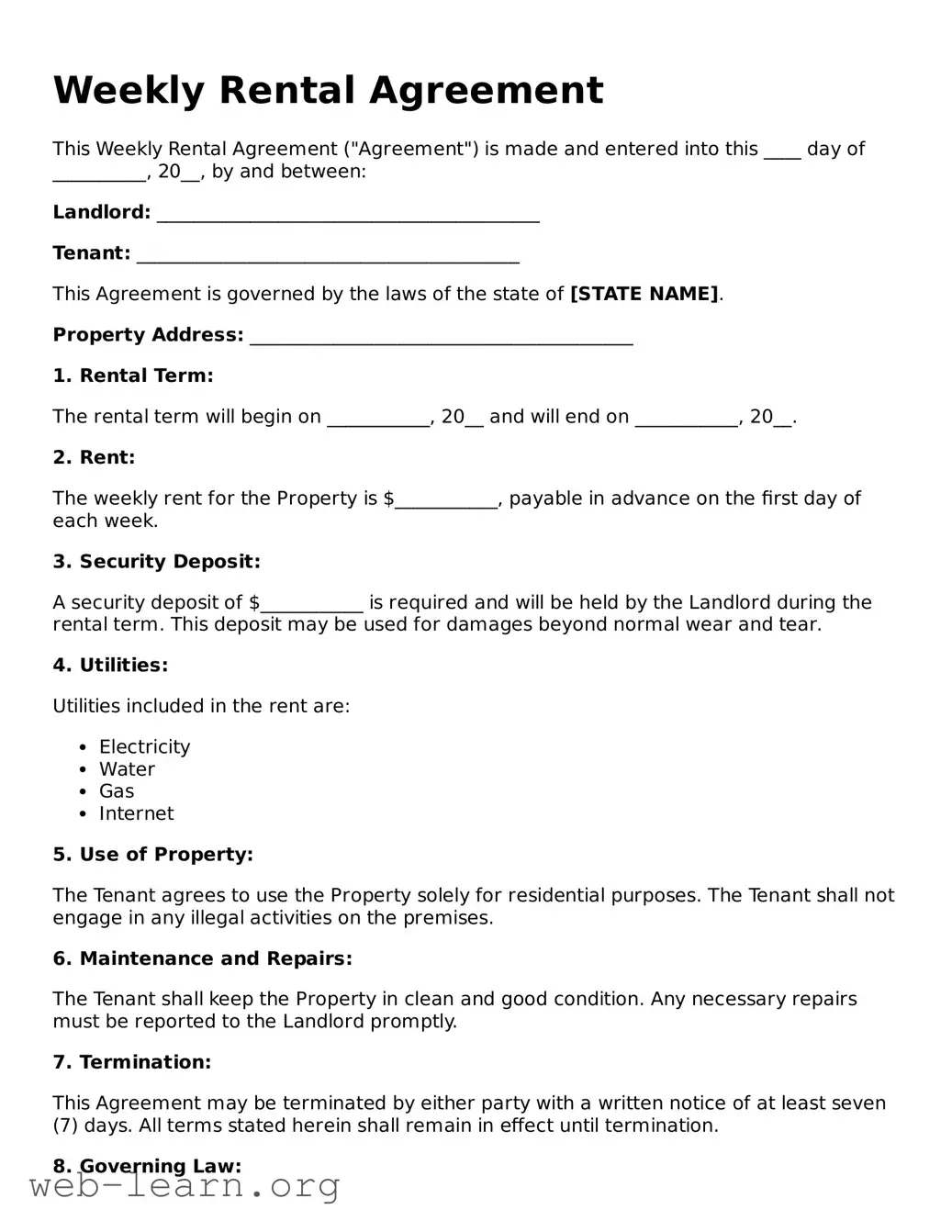Weekly Rental Agreement
This Weekly Rental Agreement ("Agreement") is made and entered into this ____ day of __________, 20__, by and between:
Landlord: _________________________________________
Tenant: _________________________________________
This Agreement is governed by the laws of the state of [STATE NAME].
Property Address: _________________________________________
1. Rental Term:
The rental term will begin on ___________, 20__ and will end on ___________, 20__.
2. Rent:
The weekly rent for the Property is $___________, payable in advance on the first day of each week.
3. Security Deposit:
A security deposit of $___________ is required and will be held by the Landlord during the rental term. This deposit may be used for damages beyond normal wear and tear.
4. Utilities:
Utilities included in the rent are:
- Electricity
- Water
- Gas
- Internet
5. Use of Property:
The Tenant agrees to use the Property solely for residential purposes. The Tenant shall not engage in any illegal activities on the premises.
6. Maintenance and Repairs:
The Tenant shall keep the Property in clean and good condition. Any necessary repairs must be reported to the Landlord promptly.
7. Termination:
This Agreement may be terminated by either party with a written notice of at least seven (7) days. All terms stated herein shall remain in effect until termination.
8. Governing Law:
This Agreement shall be governed by and construed in accordance with the laws of the state of [STATE NAME].
Signed:
Landlord Signature: ___________________________
Date: ___________________________
Tenant Signature: ___________________________
Date: ___________________________
